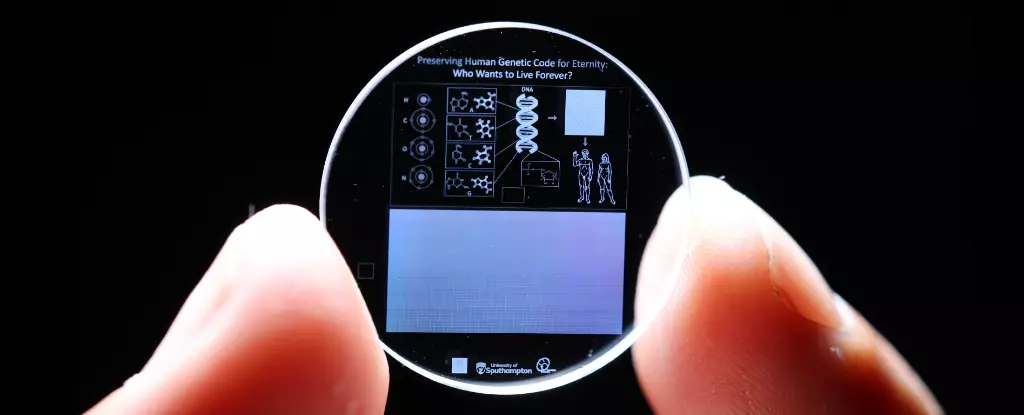As we gaze into a distant future where Earth’s ecosystems have faded into the dust and gone, the notion of preserving humanity’s essence becomes paramount. While such thoughts might prompt an existential analysis of our existence, recent breakthroughs in storage technology provide a beacon of hope. Researchers at the University of Southampton have innovatively demonstrated the capabilities of five-dimensional (5D) memory crystals by encoding the complete modern human genome within this advanced medium. This advancement presents not only an intriguing vignette of human ingenuity but also underscores the potential for safeguarding vital information against the inevitable passage of time.
At its core, the technology surrounding 5D memory involves the manipulation of light and materials at a nanoscale level. Since the development of this technology in 2011, scientists utilized incredibly short pulses of laser light, known as femtoseconds, to create tiny voids within silica—a type of glass primarily composed of silicon dioxide. These voids function as storage units, and their configuration in three-dimensional space enables the encoding of various data forms.
Information is preserved using the geometric and optical characteristics of these nanoscale voids. By adjusting the energy input, researchers can create voids of differing sizes, densities, and alignments. This multifaceted encoding technique culminates in what might be considered an information storage revolution—capable of holding hundreds of terabytes within an extraordinarily compact volume. Furthermore, with resilience that surpasses conventional storage solutions, these crystals can withstand extreme environmental conditions, ensuring the long-term integrity of the encoded data.
The collaboration between the University of Southampton and Helixwork Technologies marks an innovative venture into genomic preservation. By imprinting approximately 3 billion base pairs, representing the entirety of the modern human genome, into a single crystal, this research signifies not only a technical achievement but a philosophical commitment to preserving human legacy. Totaling about 800 megabytes, this vital genetic information is now securely housed within a repository designed for future retrieval.
Stored in the Memory of Mankind archive located in Austria, this crystal joins an ensemble of historical data inscribed on durable materials, ensuring that the essence of human existence is not lost to the ravages of time. While the likelihood of future intelligences resurrecting Homo sapiens remains a highly speculative concept, the act of preservation itself speaks volumes about our desire to leave behind a trace of who we are and what we have achieved.
Envisioning a time when advanced civilizations may stumble upon data repositories raises profound questions. What meaning would the fragmented remnants of human DNA hold for a future society? Could it serve as a keystone for biological resurrection, as theorized by researchers? Peter Kazansky, leading the project, posits a world where genetic engineering techniques could eventually synthesize important traits of long-extinct species using archived genetic materials. This opens up realms of possibility, allowing future scientific exploration to venture into realms once thought exclusive to fictional narratives.
However, the value of 5D memory crystals stretches beyond the potential resurrection of humanity. With the staggering increase in data generation—an astonishing forecast of nearly 150 zettabytes of data being produced this year alone—the demand for efficient storage solutions has never been greater. From videos and social media posts to academic research, our digital footprint necessitates an evolution in data preservation strategies. The 5D memory crystal stands as a promising candidate to take on this monumental task, offering a viable alternative to energy-intensive and precarious storage methods we currently rely upon.
In a world where the implications of our technological advancements grow ever more complex, the development of 5D memory crystals serves as both a symbol of human achievement and a pragmatic solution to an insatiable data storage hunger. While we contemplate the journey and legacy of humanity, it becomes increasingly vital to pursue methods that enshrine our existence for future generations.
As we explore the possibilities of biological resurrection, efficient information archiving, and a more sustainable digital ecosystem, the 5D crystals remind us that a legacy written in light can endure the ravages of time, whispering our story to an audience that may one day inhabit a world starkly different from our own. The challenge lies before us: to ensure that such intricacies, representative of our civilization, continue to be safeguarded long after our transient presence fades away.

Leave a Reply